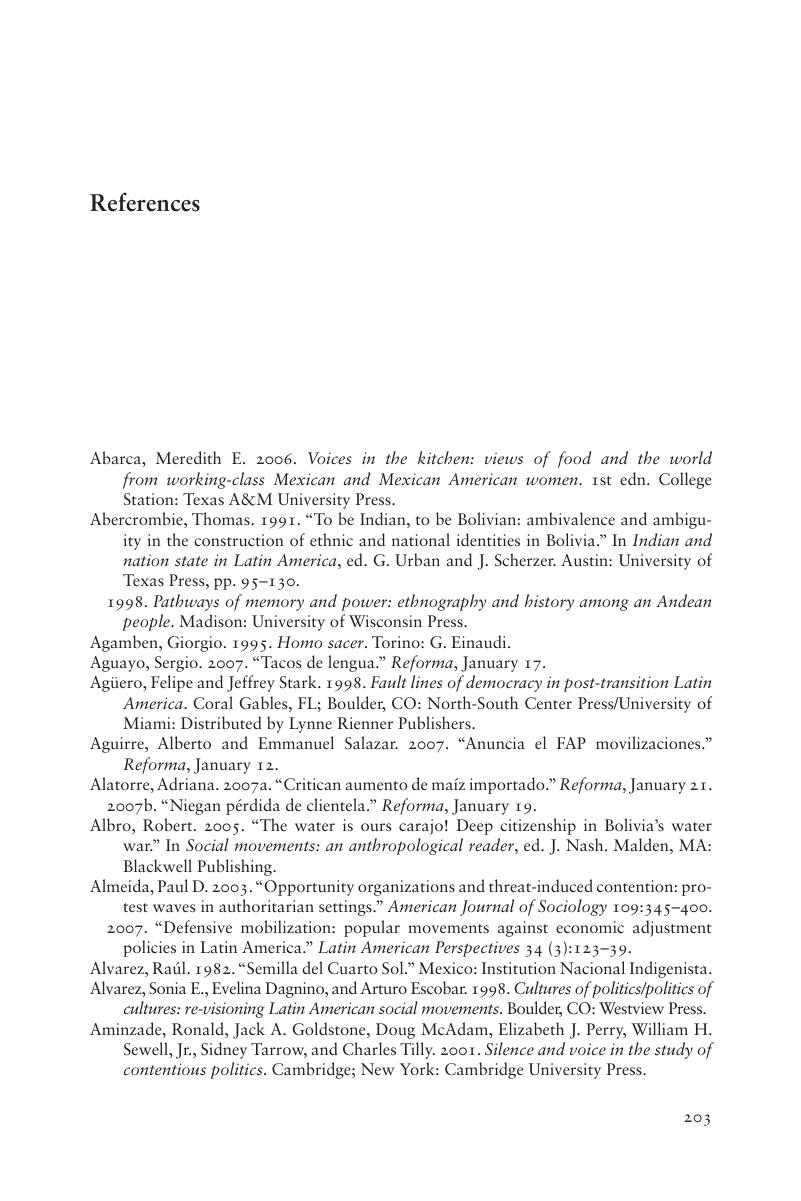Book contents
- Meaningful Resistance
- Cambridge Studies in Contentious Politics
- Meaningful Resistance
- Copyright page
- Dedication
- Contents
- Acknowledgments
- Abbreviations
- 1 Introduction
- 2 Water in Cochabamba
- 3 ¡El Agua es Nuestra, Carajo! The origins of the Bolivian water wars
- 4 Corn in Mexico
- 5 Sin Maíz No Hay País: the Mexican tortillazo protests
- 6 Conclusions
- References
- Index
- Miscellaneous Endmatter
- References
References
Published online by Cambridge University Press: 22 July 2017
- Meaningful Resistance
- Cambridge Studies in Contentious Politics
- Meaningful Resistance
- Copyright page
- Dedication
- Contents
- Acknowledgments
- Abbreviations
- 1 Introduction
- 2 Water in Cochabamba
- 3 ¡El Agua es Nuestra, Carajo! The origins of the Bolivian water wars
- 4 Corn in Mexico
- 5 Sin Maíz No Hay País: the Mexican tortillazo protests
- 6 Conclusions
- References
- Index
- Miscellaneous Endmatter
- References
Summary

- Type
- Chapter
- Information
- Meaningful ResistanceMarket Reforms and the Roots of Social Protest in Latin America, pp. 203 - 218Publisher: Cambridge University PressPrint publication year: 2016

